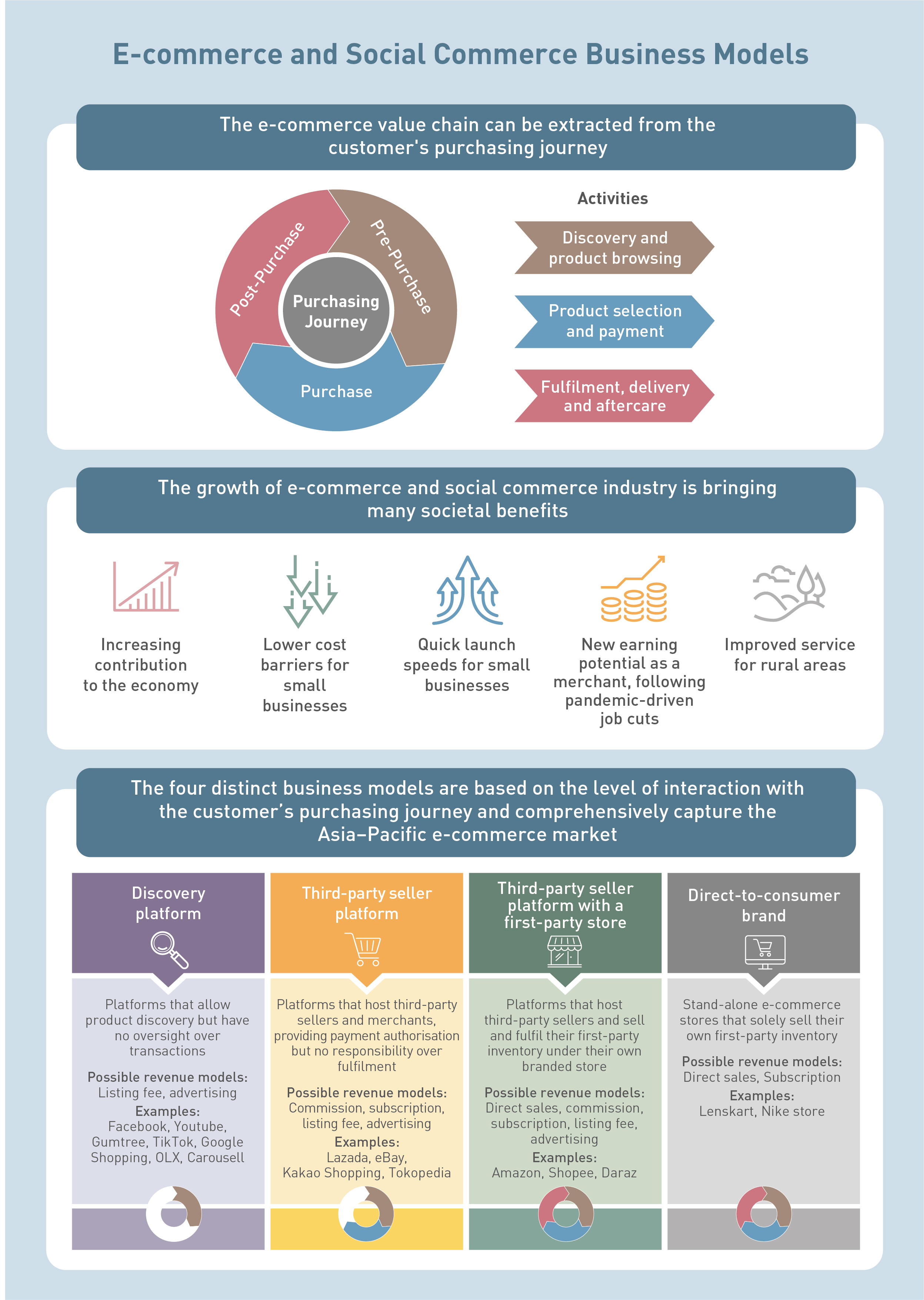E-commerce and social commerce landscape in APAC
The popularity of e-commerce has grown significantly in recent years and is now critical to the daily lives of many consumers and businesses. The total revenue generated by e-commerce sales worldwide was approximately USD4.9 trillion in 2021, which makes e-commerce one of the highest grossing industries in the world. Asia–Pacific (APAC) contains four of the ten largest e-commerce markets worldwide due to high take-up of online services and large remote populations, and the size of the market in APAC is expected to continue to grow at a strong rate over the coming years. Outside traditional e-commerce stores and marketplaces, the increasing popularity of online content and social media platforms such as Facebook, Instagram and TikTok has led to the emergence of new business models, known as social commerce.
Traditionally, e-commerce could be characterised by the type of seller and buyer involved in the transaction, that is, business-to-business (B2B), business-to-consumer (B2C) and consumer-to-consumer (C2C). However, the industry landscape in APAC is evolving because players are introducing new commerce features (offering the ability to simultaneously serve the majority of seller and buyer types) and are reducing their focus on specific forms of transaction. As a result, the boundaries between the traditional player classifications have become complex, which makes it more important to understand the different business models and the types of activities into which they have visibility.
The purpose of this report is to provide a framework of the different e-commerce and social commerce business models in APAC (excluding China) in order to adequately capture the evolving models within the region. Four business models are defined based on the level of interaction a platform has with each phase of the customer’s purchasing journey, which can be separated into three phases: pre-purchase, purchase and post-purchase. These discrete business models are further illustrated using selected case studies of some of the main e-commerce and social commerce players in the APAC region.

Authors

David Abecassis
Partner, expert in strategy, regulation and policy
